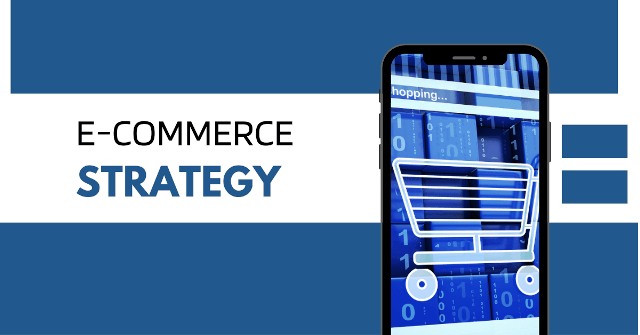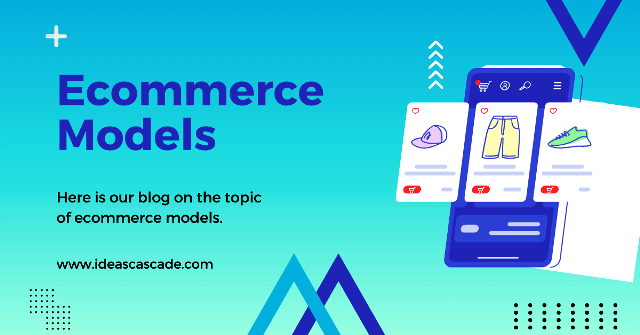Ecommerce has exploded from $2.3 trillion in global sales in 2017 to over $5 trillion in 2022. Experts project it to hit $7.4 trillion by 2025 as consumers continually shift more spending online. Capturing even a tiny slice requires strategic planning.
Table of Contents
- Conduct Thorough Consumer Research
- Analyzing competitors also helps to position uniqueness
- Set Ambitious Yet Achievable Business Goals
- Choose a Scalable Business Model
- Build a Distinct Brand Identity
- Select the Ideal Ecommerce Platform
- Curate a Strategic Product Mix
- Promote Products Over Diverse Channels
- Offer Frictionless, Delightful Experiences
- Make Security a Top Priority
- Streamline Order Fulfillment
- Constantly Analyze Performance Metrics
- Develop Reliable Customer Service
- Conclusion
- Frequently Asked Questions
- What is the ideal ecommerce site uptime goal to target?
- When should businesses consider migrating from hosted platforms to custom ecommerce software?
- What costs grow linearly with ecommerce order volumes?
- How often should ecommerce businesses audit their strategy?
- What retention tactics produce higher customer lifetime values (LTV)?
If you plan to join e-commerce, you will learn critical processes to craft a scalable strategy for sustainable growth here. This comprehensive guide also defines key ecommerce models and components to weave together. So, keep reading if you want to learn ’’How to Create an Effective ecommerce strategy.
Conduct Thorough Consumer Research
Conducting thorough research is the first and most crucial step in any business. Knowing your target audience and selection motivators is vital when assessing business viability. What key factors you should focus on:
- Personas – Detail age, gender, locations, values and buying power
- Journey Maps – Understand triggers that spark purchases and brand touchpoints influencing decisions
- Market Gaps – Identify “white space” opportunities where demand exceeds supply
Analyzing competitors also helps to position uniqueness
Accurate information about following factors helps to form a new eCommerce strategy or improve an old one.
- Review strengths and weaknesses.
- Assess differential advantages and ability to provide.
- Pinpoint unmet user needs to address.
Set Ambitious Yet Achievable Business Goals
Setting goals to reach your destiny gives positive energy to grow and saves time in systematically managing tasks. Having measurable business goals keeps strategies accountable for bottom-line growth. Prioritize goals delivering maximum revenue impact first:
- Increase Sales – Set realistic targets based on addressable market sizes and expansion roadmaps.
- Boost Brand Reach – Focus both on new visitor growth and retention rates of high-value existing segments.
- Expand Offerings – Grow product catalogs and variant selections through rigorous testing.
Choose a Scalable Business Model
Several ecommerce models exist, with unique infrastructure and inventory considerations. Choose one that works well with your budget and financing strategy.
- Dropshipping – lowest barrier to entry, but margins slim relying on suppliers
- Wholesale – Balance holding popular items against overstocking risks
- Owned Inventory – Control production quality and differentiation but intensive upfront
Factor current funding, existing assets, tax implications and vertical knowledge when selecting an optimal model. Be ready to flex as business needs evolve.
Build a Distinct Brand Identity
Consistent branding allows more profound connections with target users. Unique products drive repeat purchases and word-of-mouth referrals. To build a distinct brand identity, invest in the following:
- Style Guide – Typography, color palette, and logo guidelines fortify recognition.
- Tone and Voice – Tailor copywriting and messaging per persona expectations.
- Visual Assets – Photography, videos, and graphics set expectations while conveying values.
Select the Ideal Ecommerce Platform
Choosing a suitable ecommerce platform provides a sound foundation for a seamless and successful online shopping experience.
Whether using hosted SaaS solutions or custom platforms, ensure technical infrastructure aligns with business models and goals. Select any of these due to their unique functionalities.
- Hosted -Hosted platforms like Shopify or BigCommerce provide quick launches but less control over functionality vs code access.
- Headless – Hosted platforms like Contentful or Commerce Layer separate front-end UX design from the back-end.
- Custom – Tailor systems yet intensive IT resources required but goes well with complexity.
Keep visitor experience frictionless. Test performance routinely with desired inventory volumes and sales projections.
Curate a Strategic Product Mix
Map out long-term catalog plans accounting for seasonality, gaps from competitors and bundling opportunities. Be ruthless in culling underperformers using historical sales data and forecasts.
Optimize listings through compelling copy, professional photography and influencer collaborations attracting initial purchases.
Promote Products Over Diverse Channels
There are multiple ways to market your product. Try to use all, then focus mainly on the one with higher returns.
- Paid Ads – Leverage marketplaces and social platforms armed with conversion data.
- SEO – Build authority and keyword rankings through unique, quality content.
- Email – Segment outreach campaigns per user behaviours and product affinity.
- Influencers – Provide affiliate codes or gifted products to nurture advocates.
Create unified messaging across channels and buyer journey stages. Monitor channel ROI closely, doubling down on what moves metrics.
Offer Frictionless, Delightful Experiences
Conduct routine audits uncovering UX hurdles from confusing navigation to abandoned checkouts. Preemptively gather visitor feedback via surveys and session recordings.
Mobile responsiveness poses conversion challenges – ensure interface parity, load speeds and checkout between devices.
With global 24/7 sales, regularly test and optimize based on critical geographical targets. Localize site content fitting cultural nuances and preferred payment methods.
Make Security a Top Priority
Customers rank data protection and financial security high when building trust. Contract penetration testing identifying vulnerabilities. Maintain PCI compliance standards for payment processing.
Implement layered defenses across firewalls, endpoint detection and access controls. Encrypt sensitive assets both in transit and at rest.
Streamline Order Fulfillment
Align delivery and returns processes to business model constraints:
- Self-Handling – Adds overhead but permits customization.
- 3PL Partnerships – Leverage huge carrier rates and infrastructure.
- ShipStation Integration – Multi-carrier purchases and tracking.
Building stock-keeping units (SKUs) and syncing order management permits insight into procuring, and shipping speed improvements.
Constantly Analyze Performance Metrics
Keeping track of performance metrics helps make data-driven decisions and identify areas of improvement. Here is what you need to focus on:
- Key Performance Indicators (KPIs): Track macro conversions, revenue, customer acquisition costs and lifetime value markers.
- Cohorts: Compare behaviors across user segments like email subscribers vs social visitors.
- A/B Testing: Evaluate improvements to site pages, product listings and promotions driving outcomes.
Uncover optimization opportunities aligned with business goals by asking intelligent questions. What friction slows user journeys? How can re-engagement email sequencing improve?
Develop Reliable Customer Service
Proactive customer service and reactive issue resolution retain loyal brand advocates. Consider:
- Self-Help: FAQs guide standard troubleshooting.
- Interactive: Chatbots field general inquiries to agents.
- Tickets: Ensure SLAs across email, social, and calls.
Meet unique localization and peak demand needs. Gauge CSAT via surveys and sentiment analysis. Shore up self-service before problems arise.
Conclusion
Ecommerce allows entrepreneurs to reach more customers than ever imaginable just years ago. Sustainable profits are followed by researching target users and selecting focused business models.
Tactically promoting products that explicitly suit users also increases revenue generation. Monitor operations routinely for hiccups impacting conversions or operations. With the blueprint above, build ecommerce success one block at a time.
Frequently Asked Questions
What is the ideal ecommerce site uptime goal to target?
Aim for 99.95% or higher site availability monthly, equal to just under 4.5 hours of total downtime. This requires extensive monitoring, load testing and redundancy across the hosting infrastructure.
When should businesses consider migrating from hosted platforms to custom ecommerce software?
The migration is resource-intensive. Typically, custom codebases will replace hosted solutions when design restrictions, built-in features, or technical constraints prevent adding desired functionality.
What costs grow linearly with ecommerce order volumes?
Variable order processing fees, shipping carrier expenditures and payment transaction costs directly rise as sales volumes grow. Budget and plan infrastructure based on projections accordingly.
How often should ecommerce businesses audit their strategy?
Annual strategy reviews help, but quarterly assessments ensure goals and tactics remain aligned. Monthly check-ins on metrics steer resources to what works. Adapt quicker than competition.
What retention tactics produce higher customer lifetime values (LTV)?
Loyalty programs, personalized recommendations, exclusive early access promotions and VIP services incentivize repeat purchases from valuable customers.



